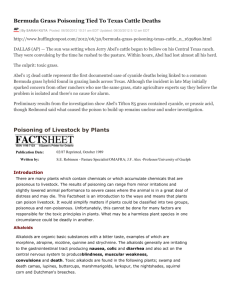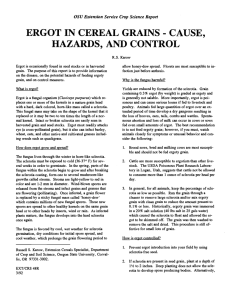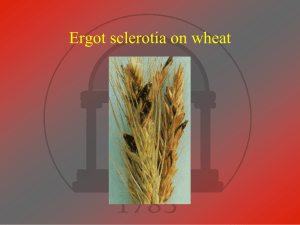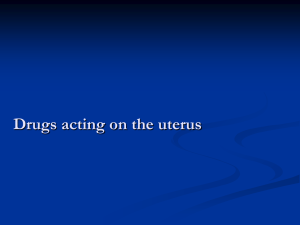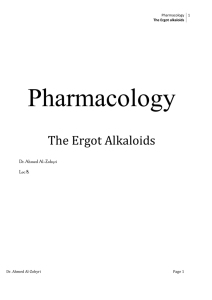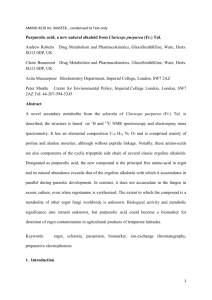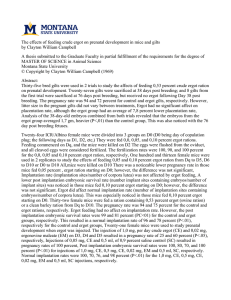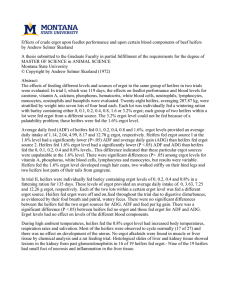Word
advertisement
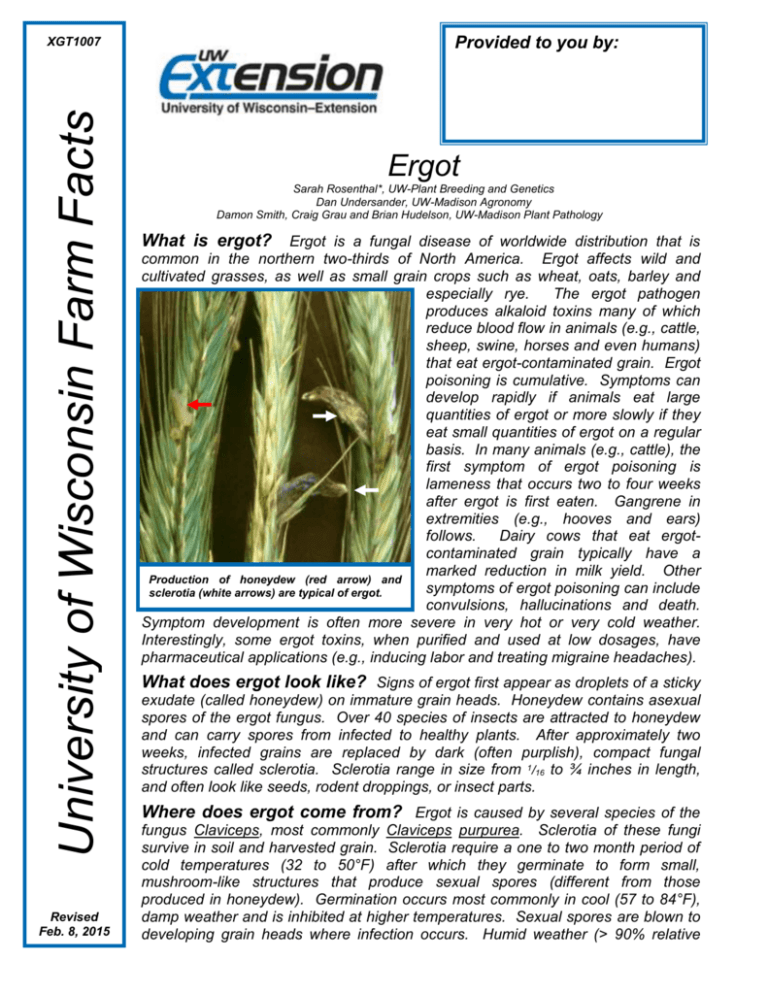
Provided to you by: University of Wisconsin Farm Facts XGT1007 Revised Feb. 8, 2015 Ergot Sarah Rosenthal*, UW-Plant Breeding and Genetics Dan Undersander, UW-Madison Agronomy Damon Smith, Craig Grau and Brian Hudelson, UW-Madison Plant Pathology What is ergot? Ergot is a fungal disease of worldwide distribution that is common in the northern two-thirds of North America. Ergot affects wild and cultivated grasses, as well as small grain crops such as wheat, oats, barley and especially rye. The ergot pathogen produces alkaloid toxins many of which reduce blood flow in animals (e.g., cattle, sheep, swine, horses and even humans) that eat ergot-contaminated grain. Ergot poisoning is cumulative. Symptoms can develop rapidly if animals eat large quantities of ergot or more slowly if they eat small quantities of ergot on a regular basis. In many animals (e.g., cattle), the first symptom of ergot poisoning is lameness that occurs two to four weeks after ergot is first eaten. Gangrene in extremities (e.g., hooves and ears) follows. Dairy cows that eat ergotcontaminated grain typically have a marked reduction in milk yield. Other Production of honeydew (red arrow) and symptoms of ergot poisoning can include sclerotia (white arrows) are typical of ergot. convulsions, hallucinations and death. Symptom development is often more severe in very hot or very cold weather. Interestingly, some ergot toxins, when purified and used at low dosages, have pharmaceutical applications (e.g., inducing labor and treating migraine headaches). What does ergot look like? Signs of ergot first appear as droplets of a sticky exudate (called honeydew) on immature grain heads. Honeydew contains asexual spores of the ergot fungus. Over 40 species of insects are attracted to honeydew and can carry spores from infected to healthy plants. After approximately two weeks, infected grains are replaced by dark (often purplish), compact fungal structures called sclerotia. Sclerotia range in size from 1/16 to ¾ inches in length, and often look like seeds, rodent droppings, or insect parts. Where does ergot come from? Ergot is caused by several species of the fungus Claviceps, most commonly Claviceps purpurea. Sclerotia of these fungi survive in soil and harvested grain. Sclerotia require a one to two month period of cold temperatures (32 to 50°F) after which they germinate to form small, mushroom-like structures that produce sexual spores (different from those produced in honeydew). Germination occurs most commonly in cool (57 to 84°F), damp weather and is inhibited at higher temperatures. Sexual spores are blown to developing grain heads where infection occurs. Humid weather (> 90% relative University of Wisconsin Farm Facts humidity) contributes to honeydew production. Ergot is also often more severe if frosts occur at the time of spore production. How can I save a small grain crop with ergot? Fungicide treatments are not recommended to control ergot. When ergot is a problem, you can attempt to remove sclerotia from grain using commercial seedcleaning equipment. However, if sclerotia are broken or are the same size as the grain itself, this may be difficult and costly, and may still result in grain that has a contamination level that is above marketable thresholds (tolerances Ergot sclerotia germinate to form mushroom-like, sporefor ergot sclerotia in harvested producing structures. grain can be as low as 0.05% by weight). Ultimately destroying the contaminated grain may be the best course of action. Be sure to also destroy the hay from the affected field. DO NOT use the hay as feed or for animal bedding. How can I avoid problems with ergot in the future? Maintain a rotation with at least one year between small grain crops. Use crops that are not susceptible to ergot (e.g., soybeans, alfalfa, corn) in years when small grains are not grown. Plant grain seed that is free of ergot sclerotia. Ergot-resistant varieties are not available, but avoid longer-flowering varieties as they tend to be more susceptible to infection. Keep weed grasses under control. Also, mow areas adjacent to small grain fields to prevent grasses from flowering and developing ergot. In fields where ergot becomes a problem, consider clean, deep plowing that will bury ergot sclerotia to at least three to four inches, thus preventing sclerotia from germinating. Mow, remove and destroy ergot-infected grasses from pastures and hayfields. DO NOT allow animals to graze in these areas and DO NOT use the harvested material for feed or as bedding material. For more information on ergot: Contact your county Extension agent. *The original version of this fact sheet was completed as partial fulfillment of the requirements for Plant Pathology 559 – Diseases of Economic Plants at the University of Wisconsin Madison. 2005-2015 by the Board of Regents of the University of Wisconsin System doing business as the division of Cooperative Extension of the University of Wisconsin Extension. An EEO/Affirmative Action employer, University of Wisconsin Extension provides equal opportunities in employment and programming, including Title IX and ADA requirements. References to pesticide products in this publication are for your convenience and are not an endorsement or criticism of one product over similar products. You are responsible for using pesticides according to the manufacturer’s current label directions. Follow directions exactly to protect the environment and people from pesticide exposure. Failure to do so violates the law. Thanks to Diana Alfuth, Bryan Jensen and Kevan Klingberg for reviewing this document. A complete inventory of University of Wisconsin Farm Facts is available at the Plant Disease Diagnostics Clinic website: http://pddc.wisc.edu.
